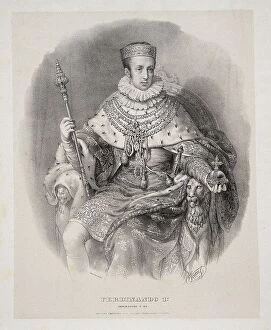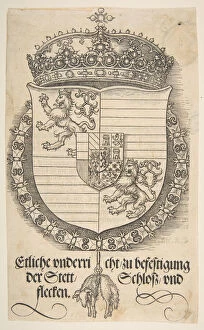Ferdinand I Of Austria Collection
Ferdinand I of Austria, also known as Ferdinand the Benign, was a compassionate and progressive ruler who reigned from 1835 to 1848
For sale as Licensed Images
Choose your image, Select your licence and Download the media
Ferdinand I of Austria, also known as Ferdinand the Benign, was a compassionate and progressive ruler who reigned from 1835 to 1848. Despite facing challenges such as political unrest and nationalist uprisings during his reign, Ferdinand remained dedicated to promoting social reforms and improving the lives of his subjects. Born in Vienna in 1793, Ferdinand was the eldest son of Emperor Francis II and Empress Maria Theresa. He ascended to the throne at a time when Europe was experiencing significant political upheaval, with revolutions sweeping across various countries. Despite pressure from conservative forces within his own government, Ferdinand advocated for liberal policies that aimed to improve education, healthcare, and working conditions for the common people. Ferdinand's reign saw the implementation of several important reforms, including the abolition of serfdom in Hungary and Bohemia. He also established institutions dedicated to providing care for the mentally ill and disabled individuals. His commitment to social progress earned him widespread admiration among his subjects. However, Ferdinand's reign was not without its challenges. The growing tide of nationalism in various parts of the empire posed a threat to his authority, leading to tensions between different ethnic groups within Austria-Hungary. In 1848, faced with mounting pressure from revolutionary movements across Europe, Ferdinand abdicated in favor of his nephew Franz Joseph I. Despite being overshadowed by more famous rulers like Franz Joseph I or Empress Elisabeth (Sisi), Ferdinand I left behind a legacy as a benevolent monarch who sought to bring positive change to his realm. His efforts towards social reform continue to be remembered today as an example of enlightened leadership during turbulent times in European history.













